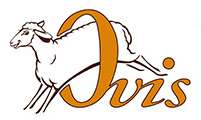Where does our sheep milk come from?
We receive our sheep milk exclusively from Austrian dairy company Leeb Biomilch GmbH. Located in the Upper-Austrian Kremstal Valley, Leeb Biomilch has specialized in the natural processing of sheep and goat milk.
Learn more at www.leeb-milch.at
How much superfat is in Ovis soap?
Our standard sheep milk soap items contain 2% superfat. Our shower soaps are a bit richer - with 6.5% of excess oils.
Is Ovis soap suitable for sensitive skin?
Ovis soap is carefully produced with rich nutrients that create a re-fattening effect. Thus, it is truly gentle to your skin. We even have a fragrance without colorants or fragrances, which we call “without scent”. This is the model most suitable for people with sensitive skin or allergies.
Are Ovis soaps certified organic?
In the food industry, the regulations for certified organic products have been very strict and clearly defined for a long time. However, this is not the case in the cosmetics industry.
The term "natural cosmetics" or "certified organic" usually refers to products that only contain natural ingredients that are not harmful to our environment or our health. However, this term is not legally protected, so anyone can use it for their products and write it on the packaging. There are various seals that "certify" a natural product. The specifications usually come from private organisations that link their seals to certain framework conditions. However, this means that not every seal stands for the same requirements and there is therefore no generally applicable guideline. These certifications also cost a lot of money.
We believe that instead of investing our money in certifications, we would rather invest in research into new products and remain true to our existing quality standards. It is important to us that our products contain as little as possible and as much as necessary. And that they only contain what is compatible with the body and the environment.
What colorants are in the soap?
We use food colorants only. These kinds of colorants are gentle to the skin.
My soap has brown stains. What is that?
Some of our fragrances contain petals (like rose petals, olive tree leaves, verbena petals, etc.), which might make the soap look a bit dotted. This doesn’t diminish the quality of your soap. Quite the contrary, there is even more nature in these editions!
What’s the difference between syndet base and conventional soap?
The base of the two is completely different. The average pH level in conventional soap is between 9 and 10. Syndet soap is pH balanced and thus adjusted to the pH level of our skin. Therefore syndet soap won’t break down the natural acidic protective layer of your skin. This makes syndet soap perfect for your daily mild face wash – no tight feeling of the skin, no burning. You could even use syndet soap to remove makeup. Ovis syndet-based facial soap enriched with aloe vera and sheep milk is the perfect addition to your skin care routine.
What is this Terralene that Ovis soap boxes are made of?
Terralene is an innovative, biodegradable synthetic. It is made from nearly 100% renewable raw materials. Its main component is sugarcane, i.e. its residue, bagasse. Thus, no extra land is needed for the cultivation of the plant. Bagasse products are food-safe and water and heat resistant. Terralene soap boxes are 100% recyclable.
If your question has not been answered by one of the above points, don't hesitate to contact us by phone +43 6217 202010 or by mail office@hansen.at

